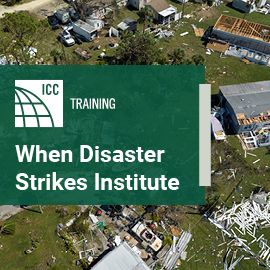
Ohio’s “Silicon Heartland” a likely boon for construction industry
Intel Corp.'s planned silicon semiconductor fabrication plants near Columbus, Ohio, could provide thousands of well-paying construction jobs over the three-plus years of the build
Intel Corp.’s plan to build two state-of-the-art silicon semiconductor fabrication plants near Columbus, Ohio — the largest single private-sector investment in the state’s history — is being hailed as the birth of a “Silicon Heartland” that could power America’s eventual return to global dominance in computer chip manufacturing, provide thousands of well-paying jobs, and generate enormous revenue for the state and local jurisdictions. Intel has yet to break ground on the project, but it anticipates that 7,000 construction jobs will be created over the three-plus years of the build.
With the world still reeling from supply chain disruptions caused by the COVID-19 pandemic, the logistical hurdles to completing the project are significant — and so too are the potential benefits for the region’s construction industry.
“A job like this will draw some of the workforce from a larger part of the region, but it’s still a long play in getting some of the younger professionals interested in the trades,” said Paul Francois, who leads Pepper Construction’s Ohio division, in an interview with Columbus Business First.
Ohio fought hard for the Intel construction project
Intel Chief Executive Officer Pat Gelsinger announced his company’s plans to build the two chip fabrication plants — colloquially known as “fabs” — in January at a news conference at the White House attended by U.S. President Joe Biden and U.S. Commerce Secretary Gina Raimondo. The company plans to invest over $20 billion in the project, its first new domestic fabs in 40 years. The company also plans to invest a further $100 million over the next 10 years to develop a skilled labor pipeline and spur local research initiatives.
 Construction of the two fabs is scheduled to begin in late 2022 with a target opening date of 2025. Should Intel decide to build out the site to its full capacity — for a total of eight fabs — its total investment in the project could reach $100 billion over the next decade, making it one of the largest semiconductor manufacturing sites in the world. Furthermore, Intel has pledged to follow green building practices in constructing and operating the fabs, including using fully renewable sources of electricity, net positive water use and no landfill waste, as outlined in the company’s 2030 sustainability goals.
Construction of the two fabs is scheduled to begin in late 2022 with a target opening date of 2025. Should Intel decide to build out the site to its full capacity — for a total of eight fabs — its total investment in the project could reach $100 billion over the next decade, making it one of the largest semiconductor manufacturing sites in the world. Furthermore, Intel has pledged to follow green building practices in constructing and operating the fabs, including using fully renewable sources of electricity, net positive water use and no landfill waste, as outlined in the company’s 2030 sustainability goals.
Ohio fought hard to get Intel to locate the fabs there, not surprising considering that they are projected to pump upward of $2.8 billion into Ohio’s gross state product. In addition to offering Intel roughly $2 billion in incentives — including a 30-year property tax abatement on the site’s nearly 1,000-acre plot in western Licking County — the State of Ohio has pledged to invest in infrastructure enhancements, including $112 million for roadway expansion.
During his White House news conference, Gelsinger emphasized that Intel’s decision to construct new fabs in the United States was “motivated” by the Creating Helpful Incentives to Produce Semiconductors (CHIPS) for America Act, which is part of — but not funded in — the 2021 National Defense Authorization Act. “We’re putting our chips on the table, as I like to say,” Gelsinger said.
Gelsinger said that the CHIPS for America act will “help address the long-term impacts of the semiconductor shortage, global supply chain challenges, and associated rising costs faced by American families today” and “will also ensure America maintains its leadership role in semiconductor manufacturing and research and development.” A 2022 study by the Congressional Research Service found that the U.S. share of the world’s chip manufacturing capacity fell from a dominating 40 percent in 1990 to a mere 12 percent in 2020, with American tech companies relying on East Asian companies for nearly all of their semiconductors.

Fab facts and figuresIn January, Intel Corp. announced its plans to build two silicon semiconductor fabrication plants (or “fabs” for short) near Columbus, Ohio. The plants are expected to open in 2025. Here are some interesting details about the project, which is being hailed as the largest private construction project in the state’s history:
|
Columbus will tackle construction labor challenges with help from the Building Futures program
 An infrastructure project on this scale would present hefty logistical challenges for the region’s construction industry even in pre-pandemic times, although at this stage it is too early to know what the solutions will ultimately look like. The city of New Albany, which follows the 2017 Ohio Building, Plumbing and Mechanical Codes, all of which adopt amended International Codes (I-Codes) published by the International Code Council, issued requests for qualifications from mechanical, electrical and plumbing (MEP); telemetry; and geotechnical engineering firms in March, and the solicitation only closed at the end of April. As of press time, the finalists have not yet been announced — much less their proposed plans to recruit, train and house enough construction workers or to obtain and transport the required materials and equipment.
An infrastructure project on this scale would present hefty logistical challenges for the region’s construction industry even in pre-pandemic times, although at this stage it is too early to know what the solutions will ultimately look like. The city of New Albany, which follows the 2017 Ohio Building, Plumbing and Mechanical Codes, all of which adopt amended International Codes (I-Codes) published by the International Code Council, issued requests for qualifications from mechanical, electrical and plumbing (MEP); telemetry; and geotechnical engineering firms in March, and the solicitation only closed at the end of April. As of press time, the finalists have not yet been announced — much less their proposed plans to recruit, train and house enough construction workers or to obtain and transport the required materials and equipment.
To address the Intel project’s construction workforce needs, the Columbus/Central Ohio Building & Construction Trades Council is looking to its award-winning Building Futures program, a 12-week training program that guides young people from underserved communities into building trades apprenticeships.
“We’re going to do everything we can to man this Intel project,” Dorsey Hager, the council’s executive secretary-treasurer, said in an interview with Columbus Business First. The article also noted that nearby Otterbein University anticipated it would begin ramping up its adult degree completion programs to help feed the workforce pipeline for construction jobs as well as for permanent positions at Intel — most of which, according to one study, could end up requiring only a high school diploma or a bachelor’s degree.
Intel construction project’s impact on Columbus area housing market
The housing situation in the region could present some challenges in supporting a massive influx of workers to the Columbus region. Residential housing construction in Central Ohio has not been keeping pace with demand, and actually declined overall in 2021, mostly the result of fewer multi-family starts. Homeowners in the immediate vicinity of the industrial park expansion are worried about the impact of the project on their property values.
Columbus Mayor Andrew Ginther told Columbus Business First that he believes the next 10 to 15 years will be “the most consequential in the city’s history” and urged the city government to focus on building more homes, including affordable housing. To that end, the city is in the process of overhauling its zoning code and residential tax abatement policy to spur residential construction.
“Our future is at risk if we can’t build housing,” Ginther was quoted as saying.
Well-developed logistics infrastructure may be the saving grace
As to the question of materials transportation, the situation there is brighter. The Columbus region has a well-developed logistics infrastructure and transportation network that should help smooth the delivery of materials to the New Albany International Business Park, where the fabs will be constructed. Rickenbacker International Airport south of Columbus bills itself as one of the few cargo-focused airports in the world, operating 24 hours a day year-round. Adjacent to the airport is the North American International Freight Center, which includes one of the nation’s top-ten foreign trade zones, extensive warehouse capacity and distribution networks, and four intermodal facilities, including highway and freight railroad access. In other words, if a contractor can source it, it’s likely that they’ll be able to get it — and fast.
The mix of good news and caution is perhaps to be expected at the outset of such a massive undertaking and with a timetable of three years between breaking ground on the fabs and shipping their first batch of semiconductors, the state’s building trades industry has a lot of work to do. But with the enthusiastic support of Intel, state and local government, local educational institutions, and regional apprenticeship programs, the odds of a successful result are looking a lot better.







